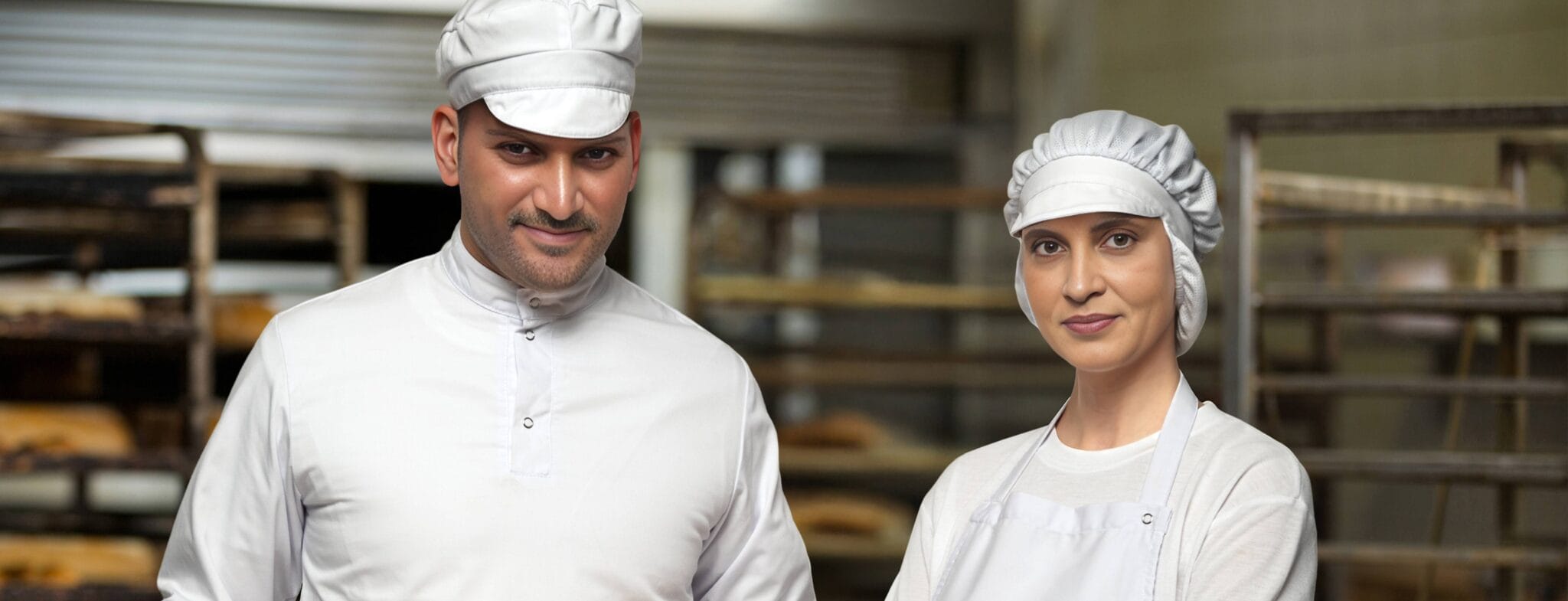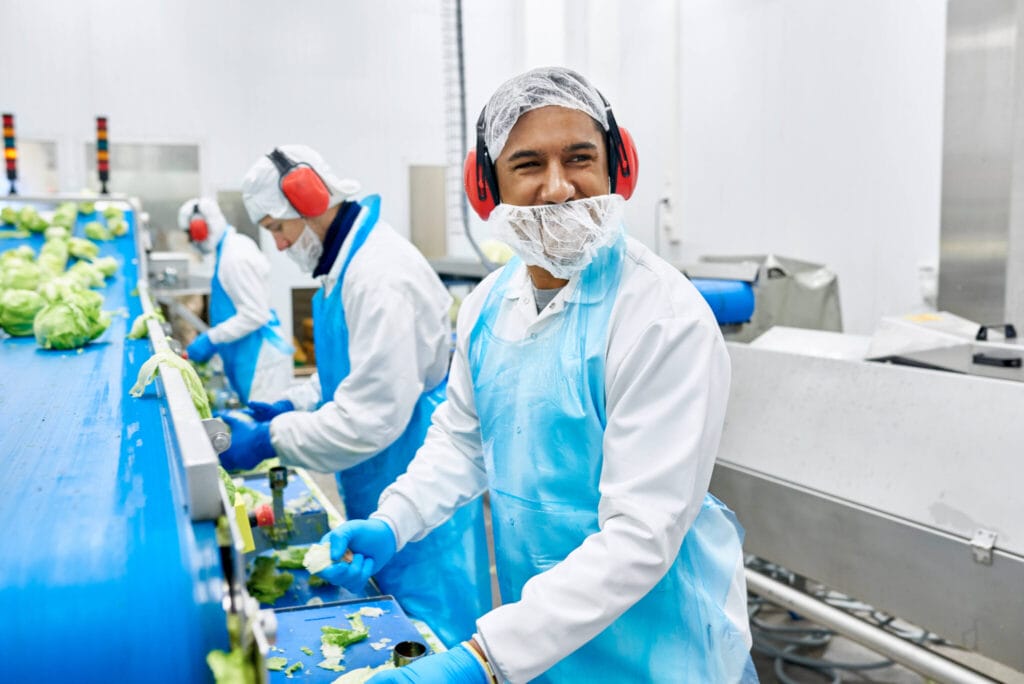
Why temperature-controlled uniforms are a game-changer in food manufacturing?
Food factories swing between temperature extremes: hot cooklines, high humidity washdowns, chilled prep rooms and deep-freeze storage. In these conditions, high-quality food service uniforms protect your people, your product, and your productivity.
The problem: heat and cold disrupt safety and performance
When workers feel too hot or too cold, they make more mistakes and are more likely to behave unsafely. Decision-making and manual task performance decline. Poorly worn PPE becomes a risk.
Cold brings hazards that are common in food plants (blast chillers, refrigerated packing, loading bays). Exposure to cold environments raises the risk of hypothermia, frostbite, and other cold-related illnesses. This is why layered, insulated safety workwear and warm-up breaks matter for every food factory worker uniform.
What “temperature-controlled” really means:
Think of temperature-controlled garments as protective clothing in food industry that actively manages the microclimate next to the skin.
For hot zones: lightweight, breathable fabrics that move moisture away from the skin, mesh ventilation where hygiene allows, and optional personal cooling (e.g., phase-change or liquid-circulation vests under outer layers). Studies show that personal cooling systems reduce physiological heat strain, especially when protective clothing traps heat and humidity.
For chilled/freezer areas: insulated mid-layers, wind-resistant outer shells, thermal accessories (caps, neck warmers) and gloves designed for dexterity.
This approach keeps workers within a more stable comfort band even as they move between hot cookers, ambient corridors and cold rooms, which may happen several times a day in food production environments.
Hygiene and compliance come first:
Any food production uniform or food factory worker uniform must satisfy legal and audit expectations. For instance, in Europe, food hygiene law is clear: everyone working in food-handling areas must maintain high personal cleanliness and wear suitable, clean and, where necessary, protective clothing.
If you’re certified to BRCGS, you’ll also recognize design rules that prevent contamination. For example, where food or packaging is handled, protective clothing should have no external pockets above the waist and no sewn-on buttons and be available in sufficient numbers to change when soiled. Temperature-controlled options must respect these details and support a strong garment compliance audit framework.
The operational upside you feel:
When people are thermally comfortable, they can concentrate, follow procedures and wear PPE correctly. Health and safety organisations connect discomfort directly with unsafe behaviours and reduced manual performance, which can translate to fewer near-misses and rework on the line.
In cold rooms, dexterity matters for tasks like trimming, packing, and quality checks. Cold exposure (even with gloves) can reduce manual performance, so well-designed thermal gloves and hand-warming strategies protect both speed and accuracy.
Cooling and insulation technology has matured too. Independent reviews of personal cooling systems report measurable reductions in heat strain for workers wearing encapsulating PPE, useful for hot cookhouses, CIP operations and steam-laden areas.
Why a rental service lifts the burden:
Uniform performance depends on consistent laundering, timely repairs, and the right size always available. That’s hard to maintain in-house. With Lindström’s workwear rental and laundry model, the garments, hygienic washing, repairs, replacements, delivery, storage and even lockers are all handled, without hidden costs, so you keep focus on production.
For the food sector, look for laundries that operate to EN 14065 (RABC). This European standard sets a risk-management framework to consistently assure the microbiological quality of processed textiles: in other words, uniforms returned to site are hygienically fit for purpose.
How to spec temperature-controlled food service uniforms:
Use this checklist when you next review your food industry uniform:
- Map your temperatures. List tasks by zone (hot cookline, ambient, chill, freezer, outdoors) and time spent on each.
- Choose fabrics at risk.
- Hot: breathable, quick-dry, low-lint outer layers; consider integrated or under-garment cooling where PPE traps heat.
- Cold: insulating, wind-resistant shells with layered mid-layers; thermal gloves that preserve dexterity.
- Design for audits. No external pockets above the waist, no sewn-on buttons, secure fastenings, and easy-to-clean finishes.
- Prioritize comfort and fitness. Adjustable cuffs/waists and multiple leg lengths help keep heat in or let it out without compromising hygiene.
- Plan the laundry cycle. Specify EN 14065-managed processing and change frequencies aligned to soil load and shift patterns.
- Build in spares. Ensure enough garments per person to maintain hygiene and temperature control through shift changes and maintenance stops.
- Train and review. Teach teams when to add or remove layers and how to use cooling inserts safely; review incidents and quality data by zone.
The takeaway:
Temperature-controlled food production uniform solutions combine hygiene, comfort and compliance at one simple level. They help your people work safely and consistently, reduce the risk of errors and product waste, and support smoother audits. Pair the right garments with an EN 14065-managed workwear rental and laundry service and you’ve removed a variable from your process, while making life noticeably better on the line.
Need help choosing the right mix for each zone? Our workwear team can temperature-map your site and recommend a tailored food processing uniforms and safety workwear set that meets your audit standards and keeps your team comfortable all year round.


